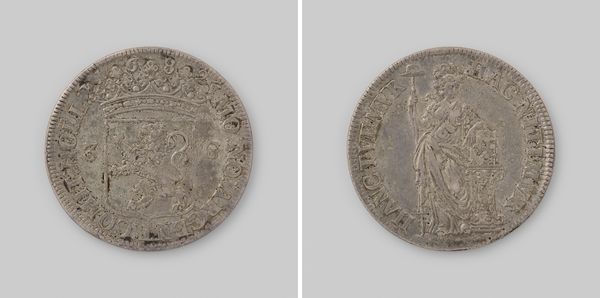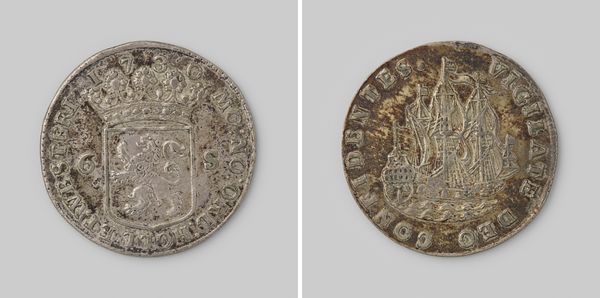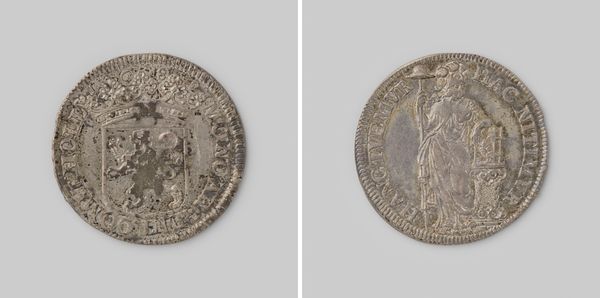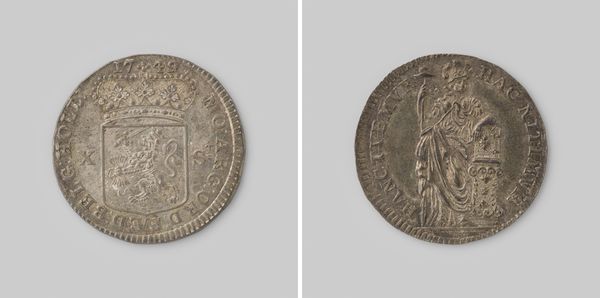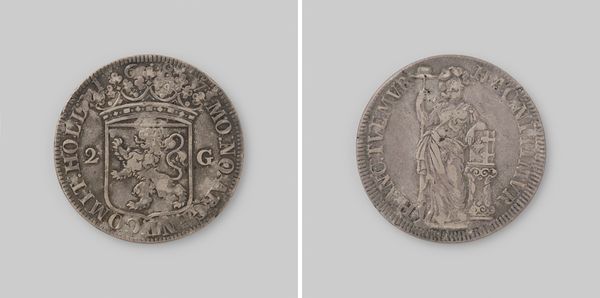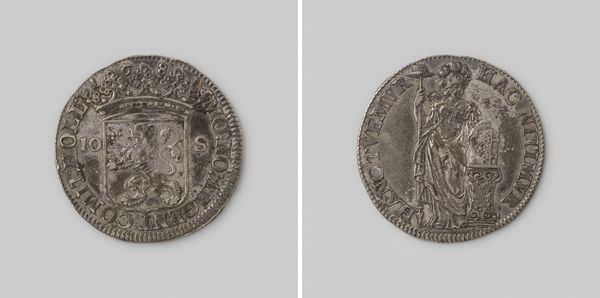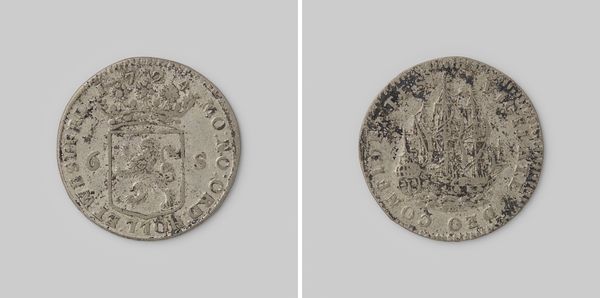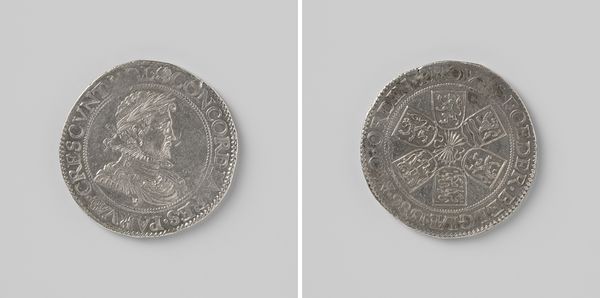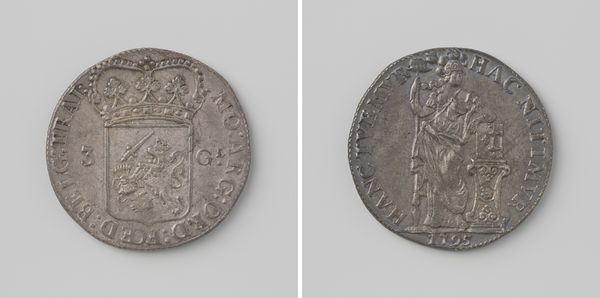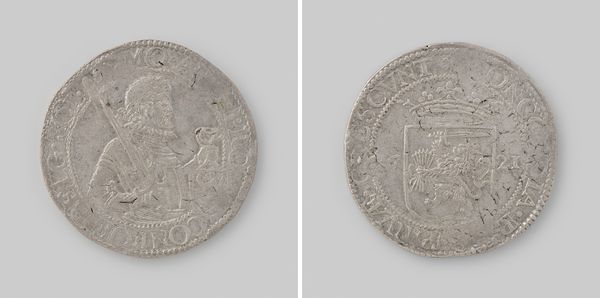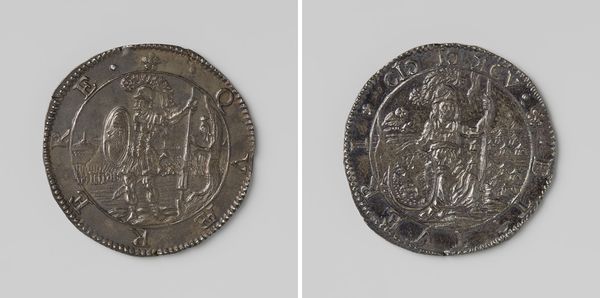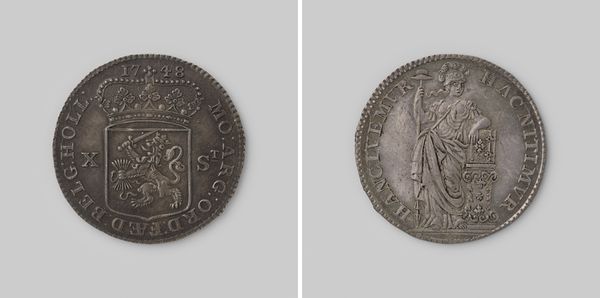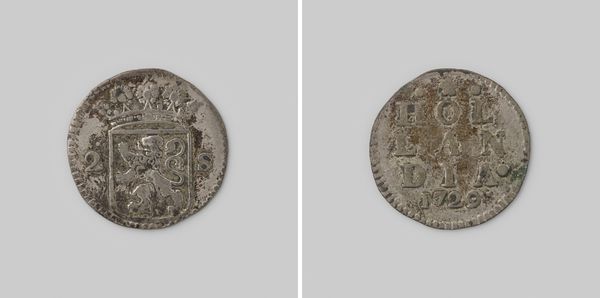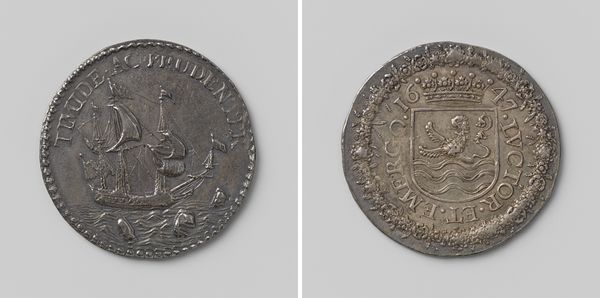
print, metal, engraving
#
portrait
#
decorative element
#
baroque
# print
#
metal
#
decorative-art
#
engraving
#
decorative art
Dimensions: diameter 2.7 cm, weight 4.83 gr
Copyright: Rijks Museum: Open Domain
Editor: This is a Dutch "Scheepjesschelling" coin from 1722, currently held in the Rijksmuseum. It's engraved in metal and depicts a ship. What initially strikes me is the immense power that this small object embodies. I mean, what stories of trade and colonialism does such a coin silently whisper? Curator: Indeed! It’s a common misconception to view numismatic objects, or other utilitarian artworks, solely as tools of monetary transaction or visual adornment. Consider instead what it *legitimizes*. Can you tell me what you observe of the imagery? Editor: Well, on one side there’s a heraldic lion beneath a crown and on the other a fully rigged sailing ship. They seem to represent power and prosperity? Curator: Precisely. Let’s deconstruct that a little. This coin isn’t just about wealth; it's about a very specific construction of Dutch identity during a period of intense maritime expansion. The lion symbolizes the Dutch Republic itself, a fiercely independent entity at the time. But who and what was that "fierceness" actually *for*? What’s missing, or marginalized in this presentation? Editor: You mean like, what were the costs of that independence and expansion? Who was exploited in the process? Curator: Exactly! That sailing ship isn't merely a symbol of trade, but of transatlantic trade, which implicates the coin in the system of slavery. Consider the phrase encircling the ship: "vigilate deo confudentes," or "trust in God, watch vigilantly.” It is thus not merely an affirmation of divine right, but almost *admonishes* piety *toward* providence! It presents colonial conquest as divinely sanctioned. What do we learn when we focus not simply on national pride but the painful undercurrents that facilitated it? Editor: So, seeing it that way, the coin becomes a complex symbol, a historical artifact not just of national identity but also a marker of colonialism and its devastating impact. That flips everything on its head. Curator: It's a lens through which to critically examine power structures and historical narratives. By questioning the coin's symbolism, we question the legacy of the Dutch Golden Age. Editor: It's incredible how such a tiny object can spark such a wide-ranging discussion. Curator: That’s the power of contextualizing art, isn't it? It transforms the mundane into a potent catalyst for critical thought.
Comments
No comments
Be the first to comment and join the conversation on the ultimate creative platform.
